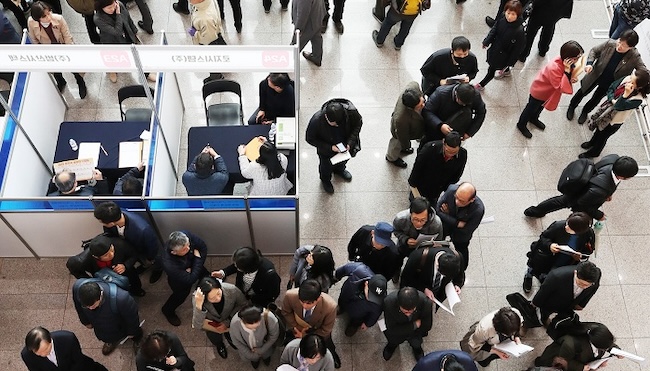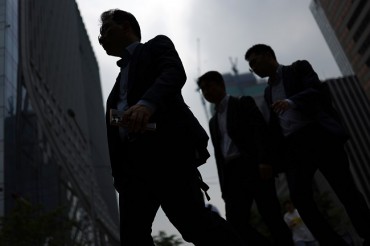
Individuals in their 50s emerged as the most prevalent age group in the workforce. (Image courtesy of Yonhap)
SEOUL, Dec. 7 (Korea Bizwire) – Last year, individuals in their 50s emerged as the most prevalent age group in the workforce, marking the first time this age bracket has been designated as the “most employed” since 2016, when statistics were first recorded.
This shift from the previous trend, where the majority of workers were in their 40s, is attributed to evolving demographics. The transition to an ‘urn-shaped demographic structure’ is reshaping the job landscape, characterized by a decline in the number of individuals in their 40s and a concurrent rise in those in their 50s.
According to the ‘Administrative Statistics on Jobs 2022′ report released by Statistics Korea last Wednesday, individuals aged 50 and above now constitute a significant 24 percent of the total workforce with 6.35 million jobs, surpassing both the 40s age group, which holds 6.31 million jobs at 23.8 percent, and the 30s age group, standing at 5.28 million jobs or 20 percent of the workforce.
Demographic changes within each age group have played a pivotal role. As per the Ministry of the Interior and Safety’s resident registration demographics by age, individuals in their 50s accounted for 16.7 percent of the population last year, surpassing those in their 40s at 15.7 percent.
This contrasts with 2008 when the ministry first collected such statistics, and individuals in their 40s (17.5 percent) were the most numerous.
This demographic shift signals a growing trend of older individuals continuing to work beyond the conventional retirement age. Out of the 870,000 new jobs created last year, nearly half, totaling 440,000, were secured by individuals aged 60 and over.
The surge in demand for care services resulted in an additional 120,000 jobs in the health and social care sector. Conversely, new job opportunities for individuals in their 20s and 30s, typically considered prime working years, increased by a modest 10,000 and 50,000, respectively.
This trajectory is anticipated to persist, with almost half of each year’s new job openings catering to individuals aged 60 and older.
Given the current demographic composition, it is projected that individuals over 50 will constitute more than half of the workforce in the next decade.
As the pool of younger workers shrinks, the likelihood of an uptick in job opportunities for the elderly is anticipated.
J. S. Shin (js_shin@koreabizwire.com)






